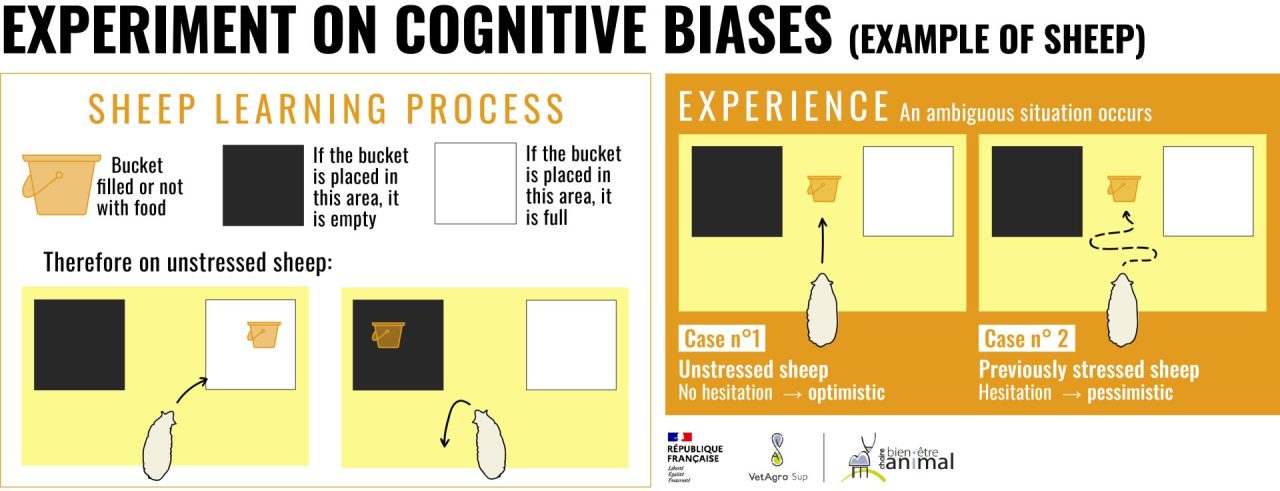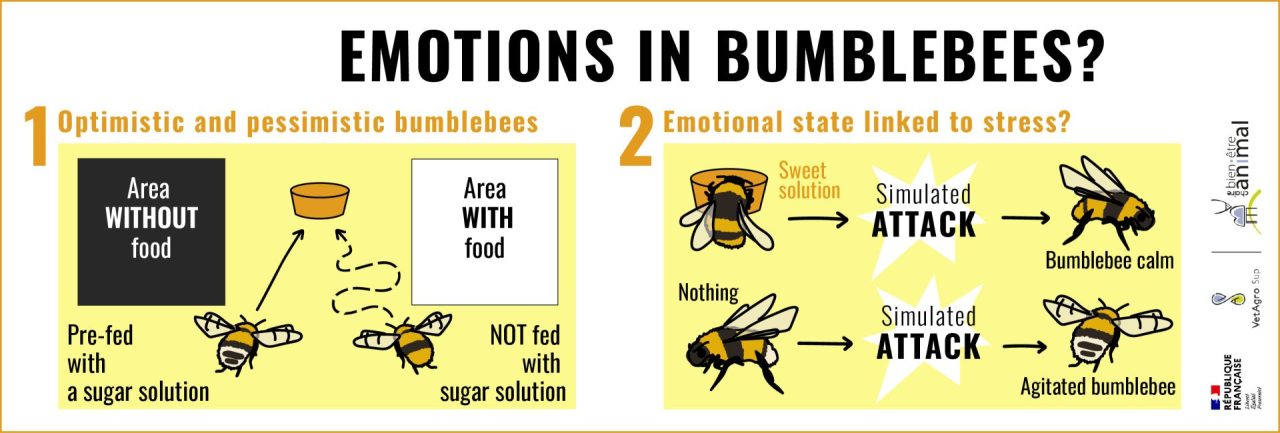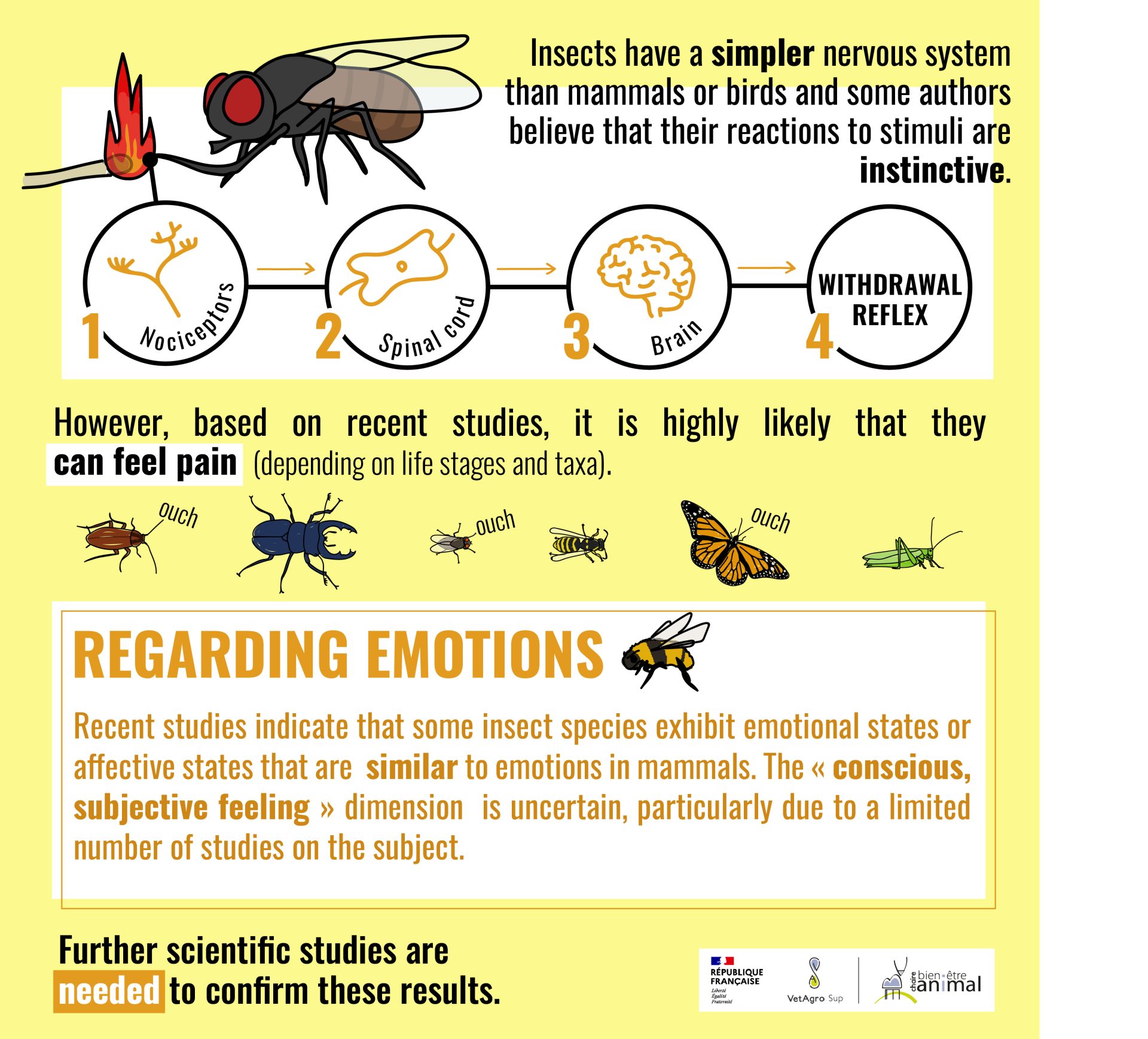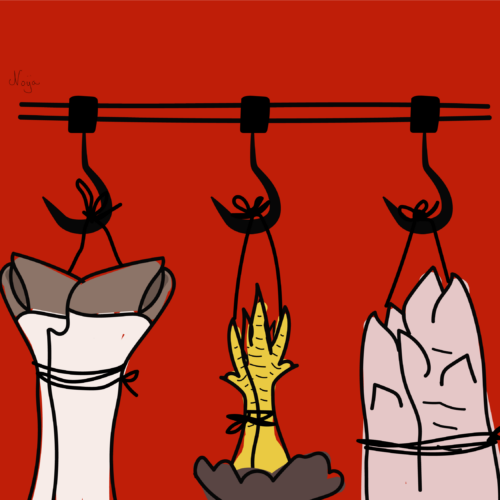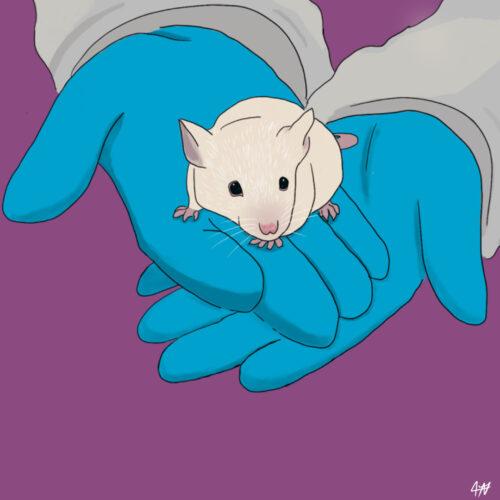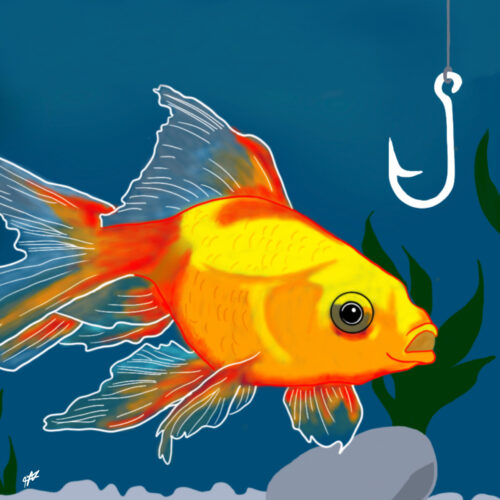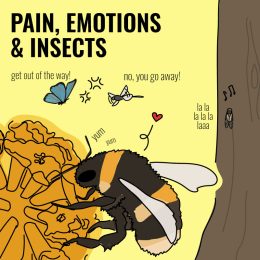

That’s a tricky one!
The simplicity of the insect central nervous system has long suggested that they cannot. Also, the anatomical and physiological differences between vertebrates and insects make comparison between the two difficult and make it impossible to say whether insects are capable of feeling pain and emotions.
However, recent studies seem to indicate that insects do indeed experience states similar to emotions, but they are still few in number. Further scientific studies are required to confirm this.
Keep in mind
- Insects are invertebrates and do not have the same nervous system as vertebrates
- According to recent studies, it is very likely that insects can feel pain
- Some species of insects may exhibit emotional or affective states similar to those of mammals
Recent research has demonstrated, often by analogy with what is known in humans or through specific tests, that the majority of animal species, including birds and fish, are capable of feeling pain and experiencing positive and negative emotions. The existence of cognitive biases – such as judgment bias for example – has also been demonstrated in many species[1].
Cognitive biases are thought mechanisms, usually unconscious, that alter our judgment and influence our choices. They generally allow us to increase mental efficiency by allowing us to make quick decisions without conscious deliberation.
A judgment bias corresponds to an altered perception of the environment by an individual under the influence of a particular emotional state. This principle mainly occurs when the situation is ambiguous and is illustrated in humans by the example of “seeing the glass” as half empty or half full. These biases have been demonstrated in animals.
Thus, sheep placed in an ambiguous situation (a bucket is placed in an intermediate location between two known locations: one that corresponds to a bucket of food, the other to an empty bucket – so the present situation corresponds to neither of these known situations) do not react in the same way depending on whether they have been previously stressed or not. Unstressed sheep quickly move towards the bucket in the ambiguous situation, being “optimistic” about the fact that it contains food, while stressed sheep hesitate to approach it, being “pessimistic” about the fact that it contains food[2].
Whether insects can feel emotions and pain is still a matter of debate among scientists.
Indeed, unlike vertebrates, for which the analogy with humans is quite easy and whose nervous system – although more complex – is much better understood, insects present anatomical and physiological differences that pose challenges for the interpretation of their subjective experience. However, some recent studies tend to call into question the idea that insects do not feel pain or emotions.

Did you know?
Vertebrates are animals that have a backbone and bones, such as mammals, birds, fish, or reptiles. Invertebrates are animals that have neither a backbone nor bones in general, such as mollusks and insects.
Insects have nociceptive abilities…
Pain is defined by the International Association for the Study of Pain as “an unpleasant sensory and emotional experience associated with or resembling that of actual or potential tissue damage“. Nociception, on the other hand, is defined as “a neural process of encoding noxious stimuli“.

The difference between pain and nociception – beyond the emotional aspect – is that pain is a conscious feeling, whereas nociception can occur – depending on the case – with or without feeling. Scientists have agreed for several years that vertebrates feel pain[3].
In insects, while nociception is a well-documented ability[4], there is still little evidence that all insects feel pain in a similar way to vertebrates[5]. Indeed, the central nervous system of insects is simpler than that of vertebrates and may not possess, so it seems, the structures associated with emotional experience (the limbic system) in mammals.
At this stage, it is not yet clear whether or not they have different structures which are capable of similar functions. However, for certain taxa?, the level of evidence is considered strong and it is very likely that they can feel pain (depending on the life stages) (see Table 1).
Table 1
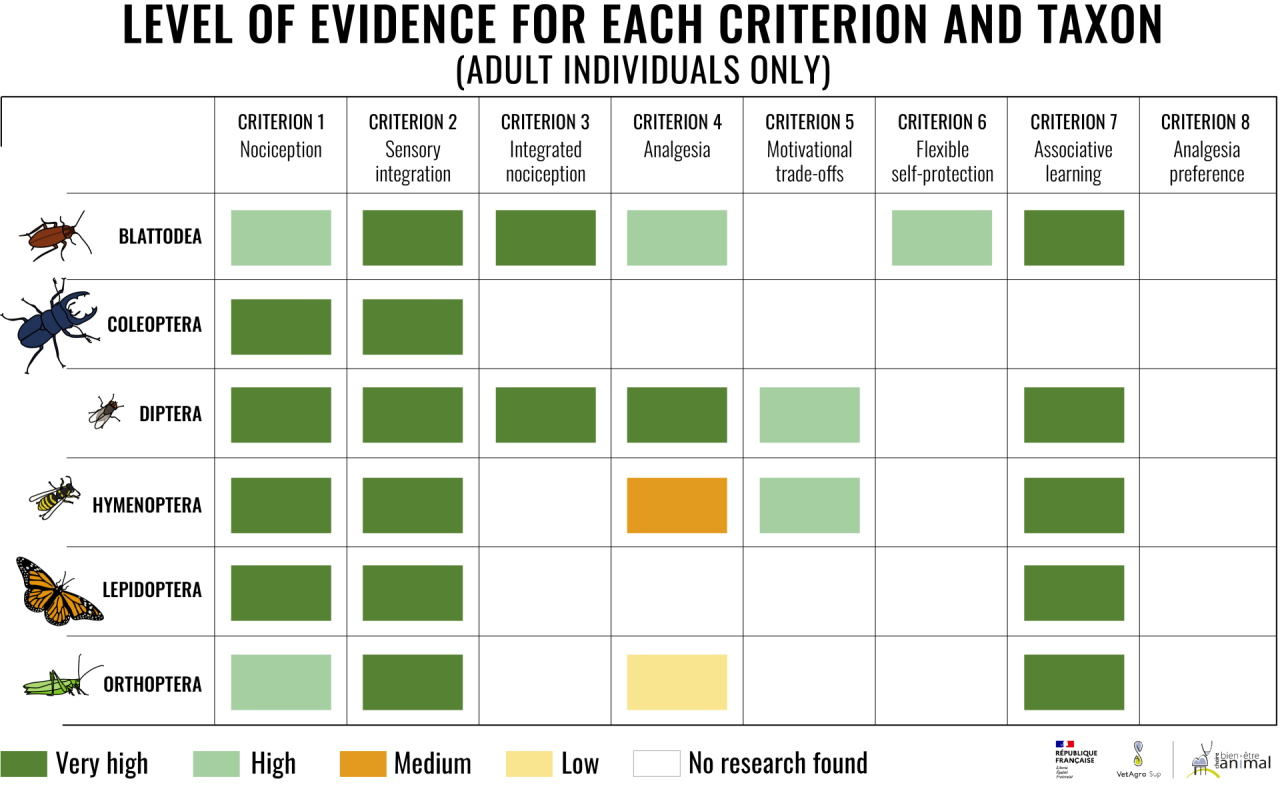
… and probably more?
Furthermore, recent studies[7] support the idea that some insects are capable of exhibiting “emotional states” or “emotion-like” states and reactions similar to pain in humans. A major review of the scientific literature on this topic was also published in 2022[6].
Thus, it has been shown that bumblebees can modulate their behavioral response to pain depending on their motivational state and therefore the context in which they find themselves[8]. Indeed, an experiment studied the behavior of bumblebees who had been given the choice between feeders of different colors (to better identify them), heated or not heated so as to provoke a nociceptive stimulus, containing food with various sugar concentrations.
Bumblebees initially avoided heated feeders when sugar concentration was sufficient in unheated feeders. But they gradually fed more and more from heated feeders as sugar concentration decreased in unheated feeders, reflecting a motivational trade-off in pain management. Importantly, bumblebees relied on previously learned color cues to make their choice.
This seems to indicate that the reaction of bumblebees in this context is the product of a decision involving several pieces of information, which indicates that their behavior is not a simple automatic reflex, but a more global processing of information by the nervous system.
Other scientific studies have shown that insects can exhibit cognitive biases based on their emotional state.
For example, bumblebees, when fed a sugar solution before a test, reacted more optimistically to an ambiguous stimulus (on the same principle as described above for sheep) than bumblebees not fed a sugar solution, indicating a form of cognitive bias similar to that produced by a positive emotional state of optimism in vertebrates.
In addition, these same bumblebees recovered more quickly from a simulated attack after receiving the sugar solution, suggesting that this emotional state could modulate their stress response, as can be observed in mammals. Finally, the study showed that the use of a dopamine blocker suppressed these positive effects induced by the sugar reward. However, in humans, dopamine is a neurotransmitter that plays a central role in motivation and pleasure. It is secreted in the brain, particularly when the individual performs a pleasant activity or receives a reward. Dopamine then encourages the repetition of the behavior that led to obtaining the reward.
Suppressing the positive effect by using a dopamine blocker in bumblebees strengthens the idea that neurobiological processes similar to those of human emotions are at work in bumblebees[9].
Another study similarly found that bees exposed to an ambiguous situation tended to react pessimistically after experiencing stress (simulated attack on their hive[10].
Finally, many insects have also shown varied cognitive abilities[11], such as associative learning abilities[12] and long-term memories or problem solving through innovative strategies[13].
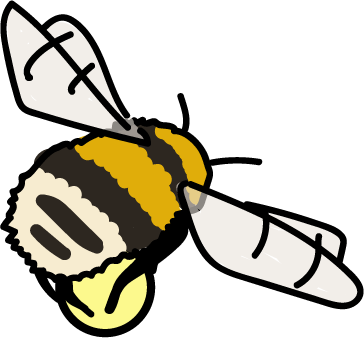
For example, bumblebees were trained, by observing a demonstrator, to move a small ball to a defined location (a target) to obtain a reward. Instead of imitating the demonstrator who moved the ball over long distances, the bumblebees were more efficient, choosing the ball closest to the target, even if it was not the same color as the one moved by the demonstrator. This highlights significant cognitive flexibility in bumblebees that use “a tool” to receive a reward, demonstrating high learning abilities[14].
However, some researchers[15] still argue that the sophisticated behaviors of insects can be explained by instinctive responses rather than conscious cognitive processes, but this does not seem to be confirmed by more recent studies.
Conclusion
The scientific community generally agrees that insects have nociceptive abilities.
On the other hand, their ability to feel the emotional component of pain and, more generally, to feel emotions is still debated. Insects have a much simpler central nervous system than mammals or birds and some authors believe that their reactions to stimuli are instinctive. However, the review of the more recent literature concludes rather that insects are capable of feeling pain, but with a very disparate level of proof depending on the taxa and life stages.
Regarding emotions, recent studies indicate that some insect species, including bumblebees, exhibit “emotional states” or “affective states” that are similar to the emotions of mammals. This allows them to modulate their behaviors in the face of positive or negative situations. However, the conscious, subjective feeling dimension associated with emotional states is still uncertain, particularly due to a limited number of studies on the subject, even if some authors suggest that this level of consciousness could exist in insects.
Further scientific studies, particularly in other insects and depending on life stages, are needed to explore these questions in more depth!
In short
What about octopuses?
Octopuses are also invertebrates. However, their intelligence is often highlighted. What about their ability to feel pain and emotions? Scientific studies have shown that octopuses are capable of feeling the affective component of pain [5] and of having subjective experiences [16][17]… these abilities are therefore definitely not limited to vertebrates.
Thanks to Sébastien Moro and Gautier Riberolles for their contribution and proofreading of this article.
[1] For example in sheep: Destrez, A., Deiss, V., Lévy, F., Calandreau, L., Lee, C., Chaillou-Sagon, E., & Boissy, A. (2013). Chronic stress induces pessimistic-like judgment and learning deficits in sheep. Applied Animal Behaviour Science, 148(1‑2), 28‑36. https://doi.org/10.1016/j.applanim.2013.07.016
[2] Doyle, R. E., Lee, C., Deiss, V., Fisher, A. D., Hinch, G. N., & Boissy, A. (2011). Measuring judgement bias and emotional reactivity in sheep following long-term exposure to unpredictable and aversive events. Physiology & Behavior, 102(5), 503‑510. https://doi.org/10.1016/j.physbeh.2011.01.001
[3] Le Neindre, P., Guatteo, R., Guemene, D., Guichet, J. L., Latouche, K., Leterrier, C., … & Serviere, J. (2009). Douleurs animales. Les identifier, les comprendre, les limiter chez les animaux d’élevage.
[4] Tracey, W. D. (2017). Nociception. Current Biology, 27(4), R129‑R133. https://doi.org/10.1016/j.cub.2017.01.037
[5] Crook, R. J. (2021). Behavioral and neurophysiological evidence suggests affective pain experience in octopus. iScience, 24(3), 102229. https://doi.org/10.1016/j.isci.2021.102229
[6] Gibbons, M., Crump, A., Barrett, M., Sarlak, S., Birch, J., & Chittka, L. (2022). Can insects feel pain? A review of the neural and behavioural evidence. Advances in Insect Physiology, 63, 155-229. https://doi.org/10.1016/bs.aiip.2022.10.001
[7] Baracchi, D., Lihoreau, M., & Giurfa, M. (2017). Do Insects Have Emotions ? Some Insights from Bumble Bees. Frontiers In Behavioral Neuroscience, 11. https://doi.org/10.3389/fnbeh.2017.00157
[8] Gibbons, M., Versace, E., Crump, A., Baran, B., & Chittka, L. (2022). Motivational trade-offs and modulation of nociception in bumblebees. Proceedings Of The National Academy Of Sciences, 119(31).https://doi.org/10.1073/pnas.2205821119
[9] Solvi, C., Baciadonna, L., & Chittka, L. (2016). Unexpected rewards induce dopamine-dependent positive emotion–like state changes in bumblebees. Science, 353(6307), 1529‑1531. https://doi.org/10.1126/science.aaf4454
[10] Bateson, M., Desire, S., Gartside, S. E., & Wright, G. A. (2011). Agitated honeybees exhibit pessimistic cognitive biases. Current Biology, 21(12), 1070‑1073. https://doi.org/10.1016/j.cub.2011.05.017
[11] Lucon-Xiccato, T., Carere, C., & Baracchi, D. (2023). Intraspecific variation in invertebrate cognition : a review. Behavioral Ecology And Sociobiology, 78(1). https://doi.org/10.1007/s00265-023-03413-8
[12] Giurfa, M. (2013). Cognition with few neurons : higher-order learning in insects. Trends In Neurosciences, 36(5), 285‑294. https://doi.org/10.1016/j.tins.2012.12.011
[13] Loukola, O. J., Solvi, C., Coscos, L., & Chittka, L. (2017). Bumblebees show cognitive flexibility by improving on an observed complex behavior. Science, 355(6327), 833‑836. https://doi.org/10.1126/science.aag2360
[14] Bridges, A. D., Royka, A., Wilson, T., Lockwood, C., Richter, J., Juusola, M., & Chittka, L. (2024). Bumblebees socially learn behaviour too complex to innovate alone. Nature, 627(8004), 572‑578. https://doi.org/10.1038/s41586-024-07126-4
[15] Adamo, S. A. (2016). Do insects feel pain ? A question at the intersection of animal behaviour, philosophy and robotics. Animal Behaviour, 118, 75‑79. https://doi.org/10.1016/j.anbehav.2016.05.005
[16] Birch, J, Burn, C, Schnell, A, Browning, H & Crump, A. (2021). Review of the evidence of sentience in cephalopod molluscs and decapod crustaceans. LSE Consulting. LSE Enterprise Ltd. The London School of Economics and Political Science.
[17] Mather, J. (2022). The Case for Octopus Consciousness : Valence. NeuroSci, 3(4), 656‑666. https://doi.org/10.3390/neurosci3040047
?A taxon refers to a group of living beings sharing certain characteristics, from which their classification is established.
Categories of biological classification, such as species, genus, family, order, class, or phylum, are taxa.
Keep in mind
- Insects are invertebrates and do not have the same nervous system as vertebrates
- According to recent studies, it is very likely that insects can feel pain
- Some species of insects may exhibit emotional or affective states similar to those of mammals
Key Figure
Publication of Can insects feel pain? A review of the neural and behavioural evidence [6], which analyzes scientific work related to insects and their perception of pain

